|
|
With so much talk of healthy foods and what you should be eating, the foods that are the worst for us can get overlooked. The reason it’s so hard to avoid these kinds of food is because the things that make them bad also make them taste good. Fatty foods typically taste good, so do sweet and salty ones, which means a lot of the foods you love are likely not the best things you can have.
But you don’t have to resort to living like Tom Hanks in Castaway, there are plenty of foods that you can turn to that taste amazing and won’t jeopardize your well-being. It’s about learning why certain foods are bad, so you can make better choices on a day-to-day basis. That being said, here are some dietary landmines to watch out for, and step around.
Trans Fat
This is the most notorious of the unhealthy ingredients they put in foods, and has even led for a ban on them in New York City. Avoiding it is tricky, no thanks in part to the FDA that allows food manufacturers to say there’s no trans fat in foods, even when there is. Since 2 grams is the most you should have in a day, allowing foods with 0.5 gram or less to call themselves trans fat free is a real problem. You’re best off avoiding trans fat-containing foods completely.
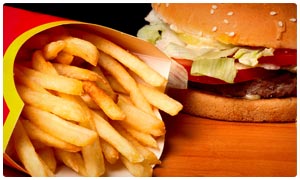
Fast Food
We all know we shouldn’t eat fast food because it’s bad for us, but part of the reason is because of all the trans fats and other additives they use to make the food taste good. The problem is not just that there is trans fat in the foods, but that the portion sizes quickly multiply those contents and before long you have a week’s worth of trans fat in one meal. A large french fry from McDonald’s supplies 4 day’s worth of trans fat by itself.
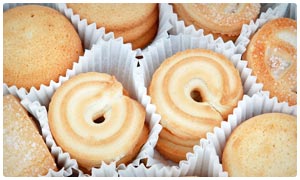
Packaged Cookies
Even the beloved Girl Scout Cookies still sneak some trans fat in, despite a label that says “trans fat free”. You may be able to justify those because they only happen a few times per year, but check to see if your favorite store bought cookies are made with partially hydrogenated cooking oils, chances are they are including Chips Ahoy and Keebler, although some brands like Oreos now use “high oleic” oils instead so they can provide shelf-stable cookies at a reasonable cost.
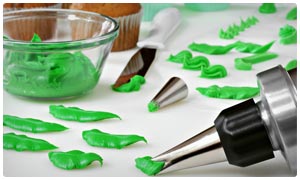
Cake Frosting
The cake itself might not have trans fat, but chances are if the frosting isn’t made from scratch it will likely have trans fat in it. Duncan Hines Creamy Homestyle Chocolate frosting doesn’t have much “homestyle” about it. Chances are you wouldn’t be using partially hydrogenated oils in your homemade frosting. One serving provides nearly a full day’s worth of trans fat, so you’d better be extra careful about all of the other food you eat that day.
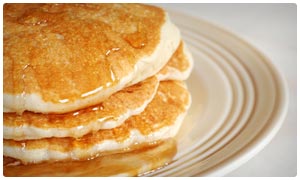
Pancakes
If you get your pancakes out of a box, you might not even suspect they might contain trans fat because it starts off in powder form. Bisquick for example has nearly 5g of trans fat in each cup. Makes you think twice about using pre-made mixes and just take the extra minute or so to come up with your own batch so you know everything that’s in it.
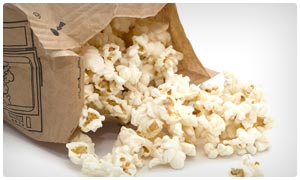
Microwave Popcorn
Most of the popular brands of microwave popcorn have trans fat of some sort in them. One of the biggest offenders is Pop Secret, which supplies 5 grams of trans fat per serving. Sounds like a lot since it more than doubles your daily allowance. The big thing to remember is that few of us stop at one serving of popcorn as we snuggle up to watch a movie at home.
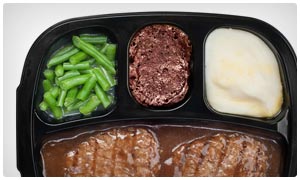
Frozen Meals
Most people buy frozen dinners for a quick and easy meal, or to help lose weight. But many of them are laden with hydrogenated oils which in turn means they contain trans fat in some amount. In order to avoid these types of meals simply check the label for both hydrogenated and partially hydrogenated oils. Since you’ll most likely be microwaving these meals, you’re also adding to their unhealthiness, further destroying any nutrients they might contain, and processing the ingredients even further.
High Fructose Corn Syrup (HFCS)
This is an ingredient that didn’t exist before 1960, but has a strong appeal to food manufacturers because it’s so very sweet, cheap to make, and easy to store. According to David Zinczenko in The Abs Diet, the human body doesn’t have a shut-off switch for HFCS the way it does with real sugar. This leads us to keep drinking a cola or eating sweet treats long after we would have stopped if they were naturally sweetened.
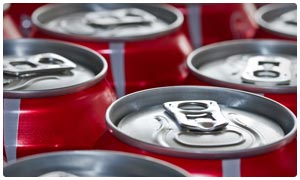
Colas and Sodas
These are the number one offender because they’re so ubiquitous. 7UP once tried to claim that their soda was made with all-natural ingredients, saying that because it comes from corn HFCS is all-natural. They no longer phrase it this way, and other colas blatantly have it listed as themost abundant sweetener. In ordinary Coca-Cola it’s the only sweetener used.
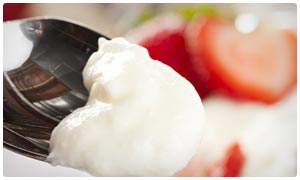
Yogurt
Although many dieters add yogurt to their daily menu, they’d better watch out at the sweeteners it contains, with many of the brands using High Fructose Corn Syrup to make them taste good. Going with a light version of yogurt no doubt means you’re getting an artificial sweetener, which can be just as bad.

Ketchup
Most ketchup ends up on french fries, and few stop to consider that it’s actually acting to make the fries more unhealthy. That’s because it uses High Fructose Corn Syrup as it’s #3 ingredient – at least a bottle of America’s #1 Bestselling ketchup: Heinz. There’s 4g of sugar total, and the majority of that will come from HFCS.
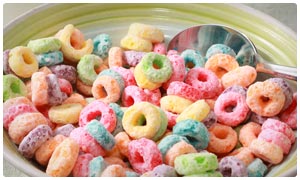
Cereals
Many people turn to cereals as a healthy start to their day, or as a nutritious breakfast for their children. Kelloggs is a big offender with several popular brands containing HFCS including Froot Loops, Apple Jacks, Corn Flakes, Frosted Flakes, Frosted Mini-Wheats, Smorz, Rice Krispies, and Special K. Kelloggs is not the only ones in on the act, with General Mills adding it to Trix, and Post adding it to Oreo O’s.
MSG (Monosodium Glutamate)
You’ll have to familiarize yourself with the other names that MSG can hide behind, including glutamic acid, monopotassium glutamate, natrium glutamate, monoammonium glutamate, yeast extract, gelatin, calcium glutamate, magnesium glutamate, soy protein, calcium caseinate, sodium caseinate, autolyzed yeast, and Textured protein, just to name a few. The most dastardly way to disguise it: “natural flavors”.
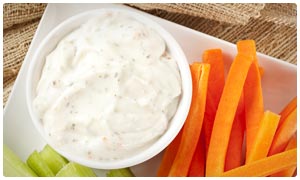
Ranch Dressing
It’s America’s favorite dressing and dipping sauce, but ever wonder why you can’t get enough of it, and why it makes so many things taste better? One of the most popular nationwide brands, Hidden Valley Ranch, has it in its ingredients, as well as Maltodextrin, Modified Food Starch, and other artificial flavors and sweeteners.
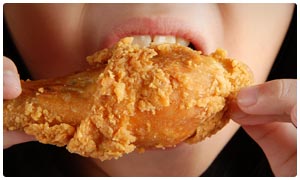
Fried Foods
Set aside the high amounts of trans fat, saturated fat, calories, and cholesterol that comes with frying foods, since that’s been covered many times before and most of us already know about those dangers. Another reason to avoid eating fried foods is that most of them will contain MSG. One of the easiest ways to get fried food with MSG in it is to stop into KFC and order anything fried from their menu. They’re not the only culprit, not by a long shot. MSG is prevalent in so many packaged foods that it’s almost a given that if it comes from a major food supplier, is fried and comes in a package, it will contain some amount of MSG.
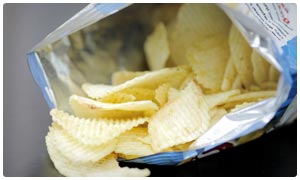
Packaged Chips
The more flavoring a chip has, the more MSG and other artificial ingredients you can expect it to have. It’s hard to come up with exact numbers of how much MSG they contain, because it’s not required to list it on the Nutrition Facts. You can get an idea of how prevalent it is by how far down the ingredients list it is. The further down, the less it has, but just remember that they’ll sneak it in using different names, so while Monosodium Glutamate might be near the bottom, a different substance may be closer to the top.
Artificial Sweeteners
Artificial sweeteners have been under the spotlight for decades now as health food advocates point out that they can come with a list of side effects, much like a drug. The side effects that are claimed by those against sweeteners like aspartame include some really severe conditions, such as depression, insomnia, blindness, tinnitus, hives, and a contributing factor to things like Alzheimer’s and MS. Whether they’re wrong or right it seems best to sidestep the problem altogether.
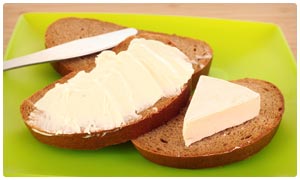
Light Foods and Beverages
If you’re calorie conscious you might be attracted to foods that are advertised as Lite or Light, since they’ll have fewer calories than their regular counterparts. But what you’re trading the calories for is typically artificial sweeteners that might be calorie-free but have their own side effects and health hazards.
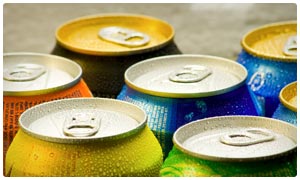
Diet Colas and Sodas
Diet sodas don’t contain High Fructose Corn Syrup, but in its place are sweeteners like aspartame. The debate rages on whether aspartame is as bad as the claims being made, but why get involved with it? It’s definitely not good for you, and if you’re drinking diet drinks you’re concerned about your health and well-being. It’s best to replace them with all-natural beverages that are low in calories, but still have some flavor, like green tea.
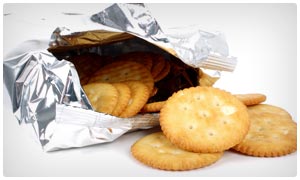
Packaged Diet Snacks
Many of these snack packs come in 100 calorie sizes, which appeals to many dieters. But in order to get them to taste good and not add too much to the bottom line they include different unnamed artificial sweeteners in them. Whether or not these are bad for you is under question, but they’re certainly not good for you, and it’s a little unnerving when they won’t tell you exactly what’s in the food.
Sodium
High levels of sodium, or salt, can really wreak havoc on your body. Not only does it cause you to retain water, but it also increases blood pressure and can lead to complications with the heart. Almost all heart patients are put on a low-sodium diet, whether they suffered a heart attack, stroke, or are at risk for them. It makes sense to watch your sodium levels long before it reaches the point of a doctor telling you to do so, or forcing you onto a diet to help save your life.
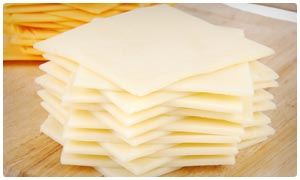
Cheese
Cheese also has copious amounts of saturated fat and cholesterol, which is why you want to go easy on it as far as your daily diet goes. But there is another factor of cheese to consider, and that is the amount of sodium it contains. Be sure to stay away from Cheez Whiz, as that has almost a quarter of the RDA of sodium in one serving. And even cheeses that are often considered healthy pack a sodium punch. For example feta cheese has about half the daily limit of sodium in a 100 gram serving.
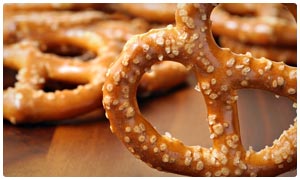
Salty Snacks
The problem with salty snacks is that the salt makes you keep eating them. Once you have the salty flavor on your taste buds you automatically reach for another chip. And the sodium is only one concern, as these snacks are usually cooked in partially hydrogenated oils giving them trans fats, and use artificial seasonings and flavorings.
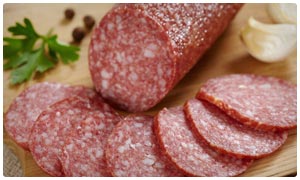
Lunch Meats
Because of the processing they go through most lunch meats are packed with extra sodium as well as nitrates. There are plenty of reasons to take a pass on lunch meats, or at least to read the labels before you buy in order to make sure that you are getting meat that isn’t loaded with fillers and additives. Some other top concerns are the bacteria listeria which can pose a problem for pregnant women, sodium nitrate which could potentially be cancer-causing, and added oils and sweeteners which add to the fat and carb count.
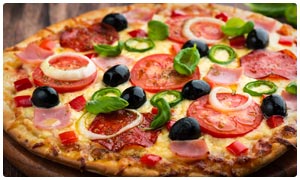
Pizza
One slice of delivered pizza can contain a full day’s worth of sodium depending on the toppings and type of crust you order. It’s mostly because of the high cheese content, but also because there’s salt and MSG in the dough, and if you’re getting toppings like pepperoni, sausage, ham, and any other cured and processed meats, you’re going to be doubling down on your sodium intake.
Cholesterol
The feds say that 300mg of cholesterol a day should be your limit. The foods below will get you to that limit pretty quickly, especially if you eat more than the recommended serving size, which is pretty easy to do in most cases. Not all cholesterol is bad for you, so be sure that you’re differentiating between the good kinds and the bad kinds, and not cutting out all foods that contain any cholesterol. These foods will increase your levels of LDL cholesterol, aka the bad kind, and are best avoided or consumed in limited quantities.
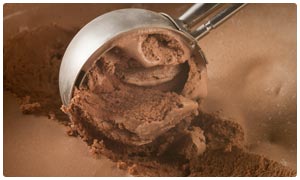
Ice Cream
Anything that tastes as good as ice cream does can’t be good for you, and as it turns out one of the reasons to avoid it is the high levels of cholesterol it contains. While one serving might not get you there, many of us don’t stop at one serving, and it’s very to overeat when it comes to ice cream, especially if we’re eating it due to emotional reasons.
Eat a pint of Ben and Jerry’s Dublin Mudslide because you’re feeling blue, and you’ll stack up 240mg of cholesterol, nearly a full day’s worth. If Haagen Daaz is your choice you and you decide to go healthy with their “5” line-up that uses just five ingredients, you’re still looking at nearly 235mg if the taste moves you to finish the pint.
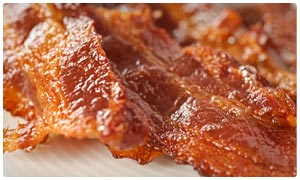
Pork Products
If you’re like Homer Simpson and have a close relationship with bacon and pork chops, you might want to think about breaking things off. The amount of cholesterol in many pork items makes them something to avoid, although each cut is not created equally. Ribs have a higher cholesterol count than a pork chop, and one good sized strip of bacon can have 13mg of cholesterol, not to mention plenty of saturated fat and calories. If you’re truly in love with the stuff, consider cutting back or sticking with leaner varieties.
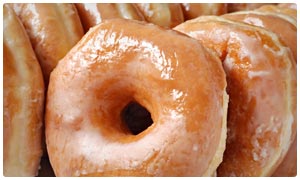
Doughnuts
OK, so we all know that donuts won’t show up on any lists of the healthiest foods, but what ends them up on this list is a combination of fat, sugar, and cholesterol, as well as MSG and trans fat in some cases. The cholesterol levels are also pretty high, and are concern enough to avoid eating doughnuts as a regular breakfast item, reserving them to perhaps a monthly treat.
Saturated Fat
Saturated fat is the type of fat that you want to watch out for, as it’s the kind that clogs your arteries and can lead to heart disease, the number one killer of both men and women in America. The recommended daily allowance for saturated fat is 20g, so you don’t have a lot of wiggle room when it comes to the biggest offenders on this list. And this 20g is a cap, it is not something you need to strive to reach each day, but a way to make sure that you keep things under control and don’t overdo it.
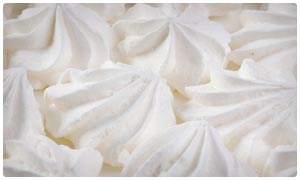
Whipped Cream
Many times they’ll ask if you want whipped cream on your hot chocolate or coffee drink. Other instances where whipped cream pops up is on top of pies, or on an ice cream sundae. You might think you’re doing better by opting for Cool Whip at 1.5g of saturated fat per serving, but the trans fat and High Fructose Corn Syrup make it a worse choice. Reddi Wip makes the case that it’s a good choice because it’s made with cream and not oil, and comes in at 1g of saturated fat per dollop.
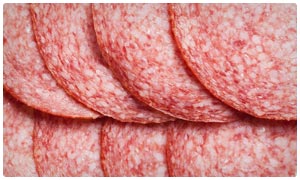
Fatty Meats
If you don’t opt for a lean cut of meat you’re likely to end up with plenty of saturated fat. When it comes to saturated fat, it doesn’t matter if it comes from natural sources, like a well-marbled piece of beef, or if it’s the kind you get from pre-packaged desserts or snacks. Meats like sausage are big culprits when it comes to saturated fat, with a serving of bratwurst at the big game putting you at over half the daily allowance, over 12 grams of saturated fat.
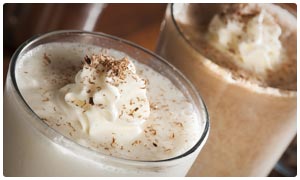
Milkshakes
Milkshakes are harder to control because they’re in liquid form so you don’t even have to chew. In a few minutes you can suck down half a day’s worth of saturated fat and not even realize it since it tastes so yummy. McDonald’s strawberry milkshake has 8g of saturated fat in a large sized serving, a whopping 40% chunk of the 20g you’re allotted per day.
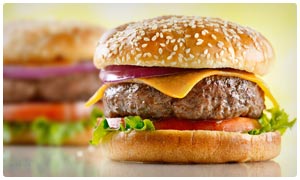
Specialty Burgers, Whoppers & Big Macs
Unfortunately getting a fancy burger at a restaurant is just as bad for you as the fast food baddies. For example, the Jalapeno Smokehouse Burger w/ Ranch, a Chili’s Big Mouth Burger contains 34g of saturated fat. The Big Mac from McDonald’s clocks in at 10g, and you can nearly double that with their Double Quarter Pounder with Cheese at 19g. Burger King’s Whopper by comparison has the same 10g.
Calories
Foods high in calories can really add to your waistline in a hurry if you’re not careful. The reason they’re so sneaky is because you can consume hundreds of calories quickly and not even be aware of it. A popular dieting theory is that the fewer calories taken in the more weight you’ll lose, all else being equal. That’s why you see people going on low-calorie diets and trying to burn calories in the gym. You don’t have to go to extremes, but minding the calories you consume will lead to a healthier you.
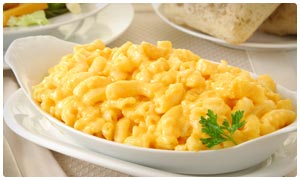
Pasta Dishes
A plain bowl of pasta won’t ruin your day, calorically speaking, but pasta often serves as the foundation for more calorie-laden dishes. A nice slab of Lasagna Classico from Olive Garden for example can tip the charts at 850 calories, more than half of the calories allotted to some dieters. That doesn’t leave much for the rest of the day. Also consider a small serving of Spaghetti with Meatballs from Buca di Beppo that tips the tables at 916 calories.
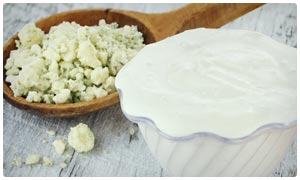
Dressings
Dressings have claimed their fair share of salads to the dark side. After creating the perfect salad at a salad bar, one that’s low in calories and contains many healthy foods, you can ruin all your hard work by drizzling it with salad dressing. This amps up the calorie count, as well as the fat count, carb count, and cholesterol numbers. French dressing smashes things up with 88 calories in each tablespoon, and Ranch crashes the party with 140, and if you go with the Blue Cheese dressing from Carl’s Jr. you should just stay home because it’s 320 calories per serving with almost all of them coming from fat.
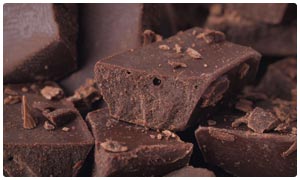
Chocolate
Dark chocolate is making a surge as a health food, but milk chocolate still rules the market and is the most easy to come by. The only problem is that it’s not as healthy for you as dark, and it’s easy to ramp up the calories if you have a chocolate binging episode. There are 3.4 calories in each M&M, 73 in each piece of Godiva chocolate, and 23 in each Hug version of Hershey’s Kisses.
Carbohydrates
It’s not as if you have to go low-carb or no-carb but you should still keep an eye on your carbohydrate intake. In fact there’s even a recommended daily allowance set at 130g. Why are too many carbs unhealthy? Foods high in carbohydrates will be digested quickly and tend to increase your blood sugar levels. This causes a release of insulin, which produces glycogen which gets stored in the body as fat. They’re also responsible for making you feel hungry again quickly, and can lead to more eating and overeating than would otherwise happen.
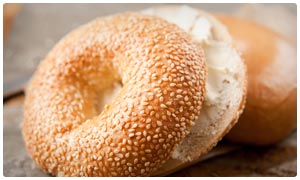
Bagels
For a long time bagels were thought of as a healthy way to start the day, until the no-carb fad came along. Now they are gaining popularity again, but is it justified? A plain bagel from Einstein Bros. Bagels contains 59g of carbohydrates, and uses up 45% of your daily allowance. Chances are when you’re having a bagel, you’re not leaving it plain and are topping it off with cream cheese, butter, jelly, or making a breakfast sandwich with it, which only makes it less healthy for you.
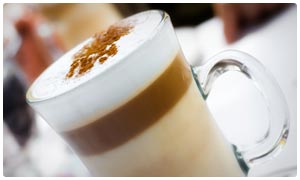
Coffee Drinks
A cup of regular Joe won’t damage your carb levels for the day, but when you get all fancy you’re ultimately created a carb-infused cocktail. A medium cappuccino from McCafe at McDonald’s will cost you 12g of carbs, and a medium sized latte, even with sugar-free syrup, still puts you at 44g of carbohydrates, almost insuring you’re going to go over your daily budget.
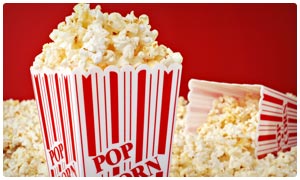
Movie Popcorn
No list of unhealthy foods would be complete without movie popcorn on it. This can fit under many categories, including too many calories, too much saturated fat, too much MSG, trans fat from hydrogenated oil, and that doesn’t even count the “butter” topping. But aside from all of that it has plenty of carbs. A large sized bucket has about 90g of carbs in it, with that number varying by location.
The Baddest of Them All
The foods listed here are just some examples of the baddest of the bad. Avoiding them will help you cut out some of the worst offenders, and will be a big stride in the right direction towards better health. Of course it’s easier said than done, because many of these foods taste incredible, and are very enticing. The goal here is not to wipe them out completely, but just to be aware of what they contain, and what they can do to your body over the long term. Keeping them to a minimum will help you enjoy them more when you do indulge because you’ll have less guilt


0 nhận xét:
Đăng nhận xét